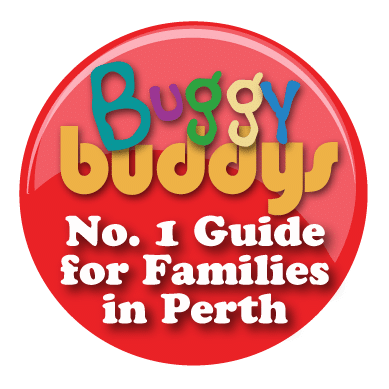I. Introduction
Defining Holistic Wellness for Individuals with Disabilities
Holistic wellness is a multidimensional approach to well-being that takes into account the interconnectedness of a person’s physical, mental, emotional, social, and spiritual aspects of life. For people with disabilities, this means:
- Physical Health: Maintaining a healthy body through regular exercise, proper nutrition, and adequate sleep.
- Mental and Emotional Well-being: Managing stress, anxiety, and depression while increasing positive emotions and self-esteem.
- Social Connections: Developing and maintaining positive relationships with family, friends, and the community.
- Spiritual Growth: Finding meaning and purpose in life, cultivating inner peace, and connecting with something bigger than oneself (this may or may not be religious).
Importance of Holistic Wellness within the NDIS Framework
The National Disability Insurance Scheme (NDIS) aims to help people with disabilities live independent and fulfilling lives. Holistic wellness contributes significantly to achieving this goal by:
- Improving Quality of Life: Individuals can enjoy life more by addressing their physical, mental, and social needs.
- Increasing Independence: Improved physical and mental health can help people manage their daily lives and participate in their communities.
- Better Management of Disabilities: Mind-body approaches can help people manage stress, pain, and disability-related symptoms.
II. Mind-Body Approaches for Holistic Wellness
As stated in the introduction, achieving holistic well-being for people with disabilities necessitates addressing physical, mental, emotional, and social factors. Mind-body approaches bridge the gap by providing practices that directly address these interconnected aspects. In this article, we will look at three key approaches that can supplement the NDIS framework’s emphasis on physical health:
Mindfulness Meditation
Mindfulness meditation, as previously stated, promotes present-moment awareness by focusing attention on the breath and bodily sensations. These practices directly address the mental and emotional well-being that are central to our definition of holistic wellness. Studies show that mindfulness meditation can lead to:
- Reduced stress and anxiety, which are frequently associated with various disabilities.
- Improved emotional regulation enables people to better manage emotions such as frustration or pain.
- Increased self-awareness leads to a better understanding of one’s thoughts and feelings.
- Enhanced focus and concentration, which may improve performance in daily activities or therapeutic exercises.
The beauty of mindfulness meditation is its adaptability. Guided meditations can be tailored to include imagery or specific body scans, making them suitable for people with a variety of cognitive or physical limitations.
Yoga and Adapted Physical Activities
Continuing with the holistic perspective, physical health is an essential component of well-being. Regular physical activity, as mentioned in the introduction, provides numerous benefits, including:
- Improved strength and flexibility may increase independence in daily tasks.
- Enhanced cardiovascular health, which promotes overall well-being and may help manage certain health conditions.
- Improved balance and coordination, lowering the risk of falls and increasing confidence in mobility.
- Increased energy levels, allowing for greater participation in daily activities.
Yoga is a unique combination of physical postures (asanas), breathing exercises (pranayama), and meditation. While traditional yoga poses may require modifications, the fundamental principles can be tailored to individual needs and limitations. Therapeutic exercises, tai chi, and swimming are all examples of adapted physical activities. These adapted activities ensure that people get the benefits of physical activity in a safe and inclusive environment.
Art Therapy and Expressive Practices
The social aspect of holistic wellness is frequently overlooked. Art therapy and expressive practices bridge this gap by offering creative avenues for emotional expression and communication. This can be especially beneficial for people with disabilities who may struggle with verbal communication.
Based on the concept of emotional well-being, art therapy employs a variety of techniques such as:
- Painting and drawing allow people to express themselves visually.
- Clay sculpting provides a tactile environment for emotional exploration.
- Music and movement facilitate creative expression and social interaction.
- Journaling fosters self-reflection and emotional communication through writing.
Participating in these creative activities can improve mental health by reducing stress and anxiety. They can also boost self-esteem by encouraging a sense of achievement and self-expression. Furthermore, art therapy can foster social connections through shared experiences and group activities. Art therapy and expressive practices address the three interconnected aspects of holistic wellness: mental/emotional, physical (via creative movement), and social.
III. Implementation within the NDIS Framework
As discussed in Part II, mind-body approaches provide a variety of benefits that directly contribute to the overall well-being goals outlined in the introduction for people with disabilities. However, integrating these approaches into the NDIS framework requires practical considerations.
Funding and Support Options
The NDIS provides individualized funding through participant plans, which are mostly managed by NDIS plan managers. This funding can be used to access a range of supports and services, including:
- Mindfulness meditation: Mindfulness-trained support workers or therapists can guide individuals or groups. Online resources and applications can also be investigated.
- Adapted physical activities: NDIS funding can be used to pay for physiotherapy, occupational therapy, or adapted yoga or fitness classes.
- Art therapy: Funding is available for individual or group art therapy sessions with qualified therapists.
Challenges and Considerations
Despite the potential benefits, implementing mind-body approaches within the NDIS presents some challenges:
- Accessibility: Programs and services must be physically accessible and accommodating to a variety of disabilities. Furthermore, access to qualified therapists trained in these approaches is critical.
- Training for NDIS Providers: Many NDIS providers may be unfamiliar with mind-body approaches. There is a need for training programs to provide them with the knowledge and skills necessary to incorporate these approaches into their support strategies.
By addressing these issues and sharing success stories, we can persuade the NDIS to recognize mind-body approaches as valuable tools for promoting holistic well-being in people with disabilities.
IV. Conclusion
As discussed throughout this article, achieving overall well-being for people with disabilities necessitates a multifaceted approach. The introduction defined holistic wellness as the interconnectedness of physical, mental, emotional, social, and spiritual dimensions. Part II investigated the effectiveness of mind-body approaches such as mindfulness meditation, adapted physical activities, and art therapy. These practices directly address the various aspects of holistic well-being, providing individuals with disabilities with tools for stress management, emotional regulation improvement, and overall well-being enhancement.
Integrating these approaches into the NDIS framework, as discussed in Part III, has enormous potential. NDIS funding can help individuals gain access to qualified therapists and adapted programs. However, overcoming barriers such as accessibility and providing adequate training for NDIS providers is critical. Sharing success stories and best practices can pave the way for greater adoption of mind-body approaches in the NDIS.
To summarize, promoting holistic well-being for people with disabilities necessitates a commitment to cultivating a life rich in physical health, mental and emotional well-being, social connection, and a sense of purpose. Individuals with disabilities can live fulfilling and independent lives if we embrace the power of mind-body approaches and effectively integrate them within the NDIS framework.

















